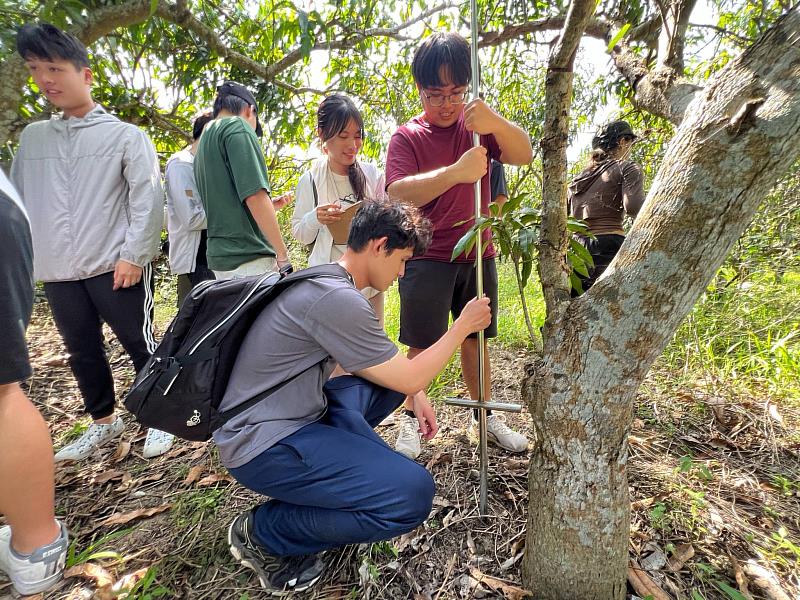“Satoyama Mace Initiative” to Advance Carbon Sequestration and Biodiversity Conservation - Aiming for 60 Million Tons of Carbon Sequestration by 2030 While Empowering Rural Regeneration and Global Sustainability
(中央社訊息服務20250512 14:40:25)Led by Professor Yen-Hsun Su of National Cheng Kung University (NCKU), the “Satoyama Mace Initiative” has officially launched as a pioneering program integrating carbon offset technologies, biodiversity methodologies, and rural revitalization. The project sets an ambitious goal of increasing carbon sequestration by 60 million metric tons by 2030, contributing to the global development of a biodiversity-based carbon credit market.
This initiative is a key collaborative activity under the International Partnership for the Satoyama Initiative (IPSI) and aligns with the Kunming-Montreal Global Biodiversity Framework (KMGBF). The program prioritizes support for developing countries, small island developing states, and countries with economies in transition.
A Holistic Framework: From Biodiversity to Verified Carbon Units (VCUs)
The Satoyama Mace Initiative is built on innovative biodiversity methodologies that generate greenhouse gas (GHG) programs designed for Socio-Ecological Production Landscapes and Seascapes (SEPLS). These programs cover five strategic clusters:
1. Knowledge Co-Production and Management
2. Institutional Frameworks and Capacity Building
3. Area-Based Conservation Measures
4. Ecosystem Restoration
5. Sustainable Value Chain Development
GHG reduction programs from Clusters 1–4 generate Verified Carbon Units (VCUs), which are reinvested into Cluster 5 to establish sustainable, market-based production systems. This feedback loop supports community-led sustainability and mainstreams biodiversity values into local economies.
Field Implementation: Community-Based Carbon Sampling in Wetlands, Forests, and Farmlands
On May 5, 2025, Professor Su and his team, in collaboration with local Indigenous communities, conducted in-situ carbon sampling and KMGBF indicator assessments across mangroves, secondary forests, and agricultural lands in southern Taiwan.

According to the Intergovernmental Panel on Climate Change (IPCC), the annual carbon sequestration potential per hectare is approximately:
643 tons in wetlands
123 tons in temperate forests
80 tons in croplands
“These landscapes hold incredible potential not only for climate mitigation but also for empowering communities,” said Professor Su. “Our goal is to co-create a sustainable value chain that benefits both nature and people.”
A Global Vision: From Poverty Alleviation to Structural Transformation
Beyond environmental impacts, the initiative addresses social and economic dimensions. By establishing a credible biodiversity-based GHG crediting system, the Satoyama Mace Initiative enhances natural resource governance, boosts community resilience, and accelerates transitions toward sustainable economies—particularly in vulnerable regions.
Looking forward, NCKU and its international partners plan to expand the program’s reach, strengthen policy and financial mechanisms for biodiversity carbon credits, and demonstrate the practical value of SEPLS in achieving the KMGBF and the UN Sustainable Development Goals (SDGs).
Introduction to the Satoyama Mace Initiative
The Satoyama Mace Initiative is a pioneering six-year international cooperation program (2024–2030) launched by National Cheng Kung University (NCKU) in Taiwan under the framework of the International Partnership for the Satoyama Initiative (IPSI) under United Nations University Institute for the Advanced Study of Sustainability. It aims to integrate carbon sequestration technologies, biodiversity conservation, and rural revitalization in socio-ecological production landscapes and seascapes (SEPLS), particularly in developing countries, small island developing states, and countries in economic transition.
Aligned with the Kunming-Montreal Global Biodiversity Framework (KMGBF), the initiative seeks to:
1. Achieve 60 million metric tons of CO₂ sequestration by 2030
2. Develop biodiversity-based greenhouse gas (GHG) programs and Verified Carbon Units (VCUs)
3. Strengthen community-based environmental governance
4. Promote sustainable value chains and benefit-sharing mechanisms
Through a combination of scientific methodology, field implementation, and indigenous/local participation, the Satoyama Mace Initiative bridges climate action with socio-economic transformation, offering a model for nature-based solutions that are both scalable and inclusive.





